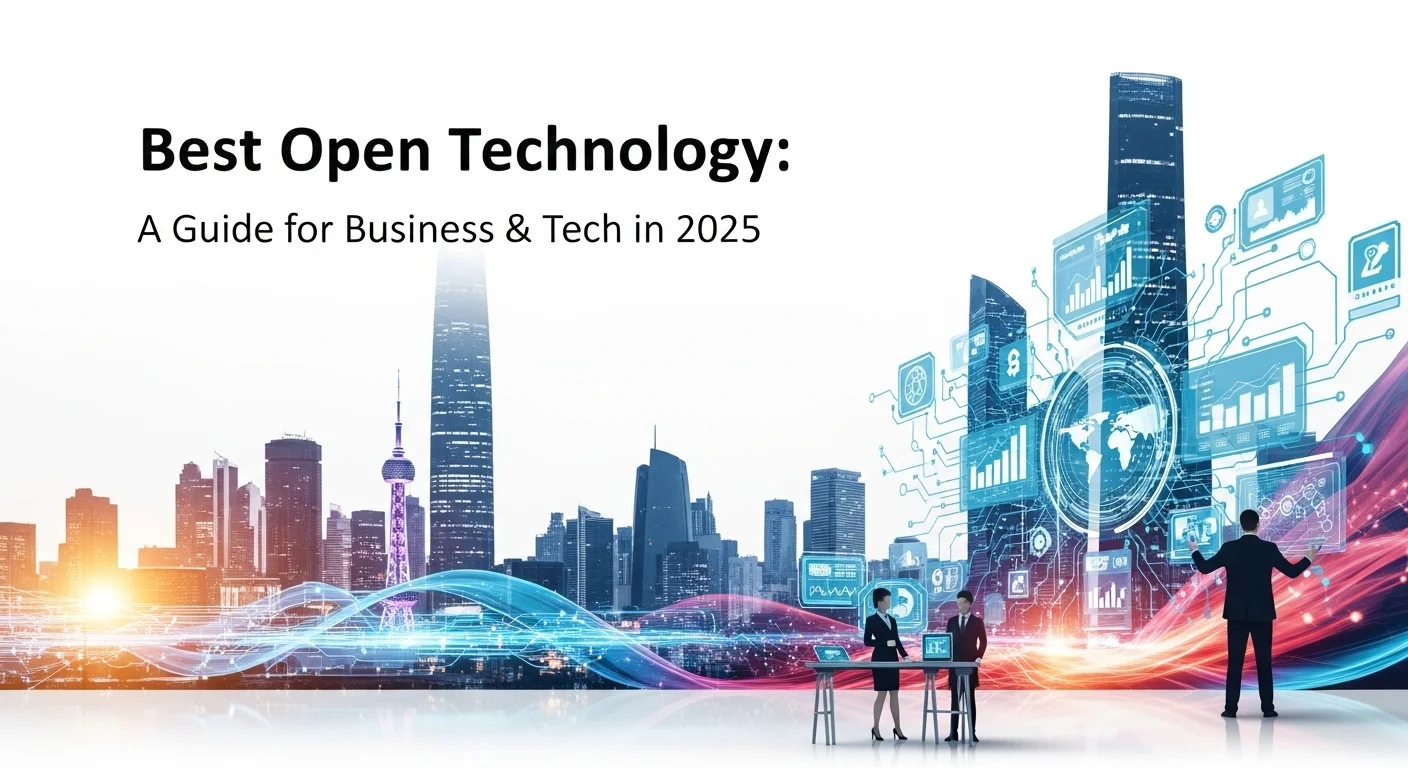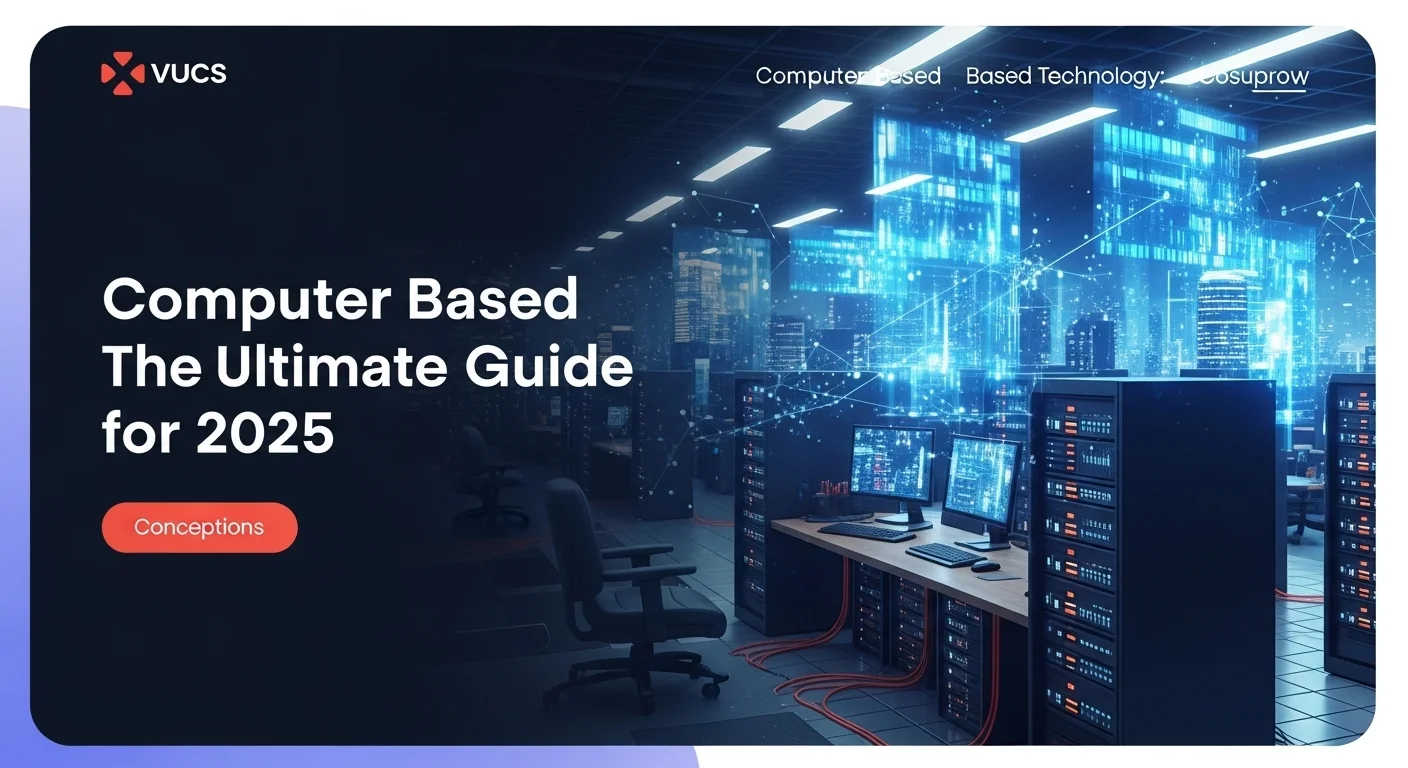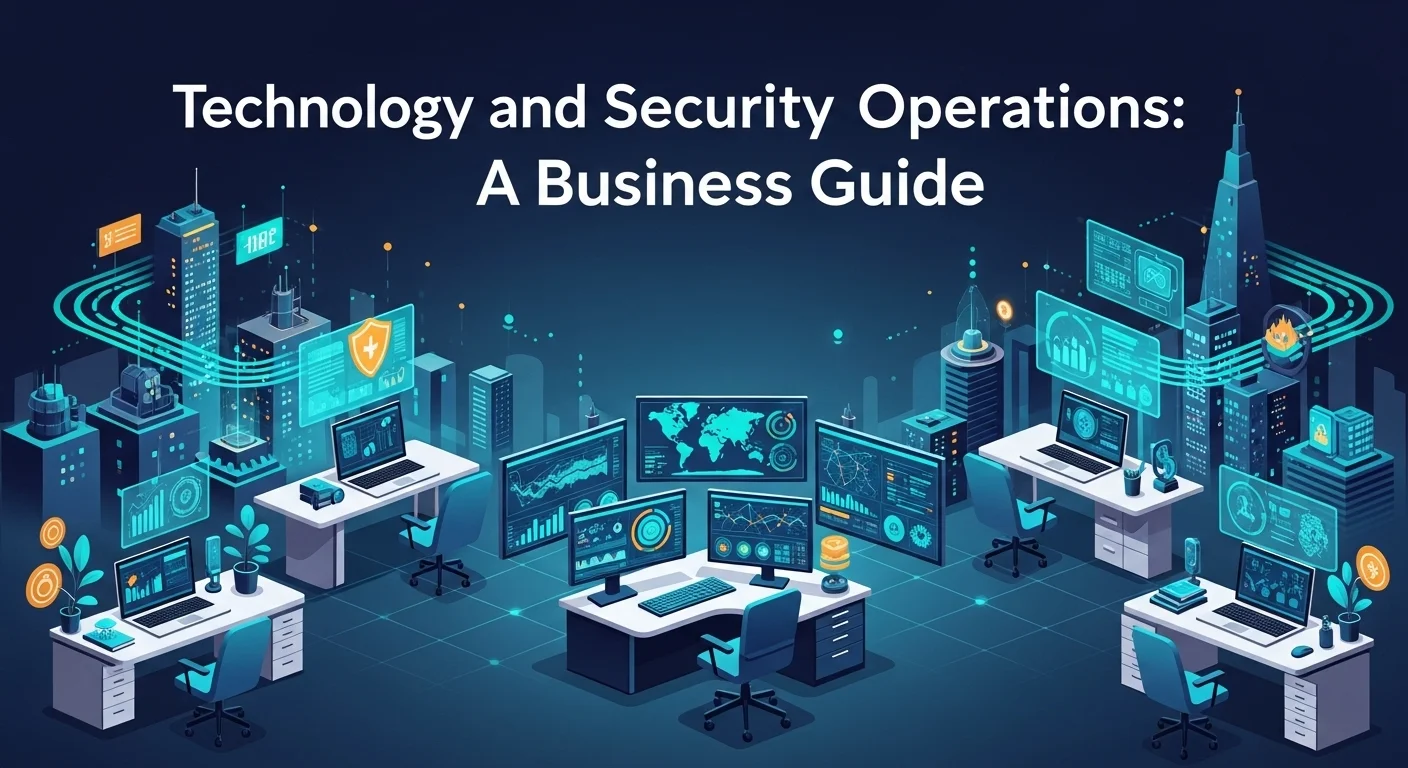Why Open Technology is Your Secret Weapon: A 2025 Guide for Your Business and Home

Executive Summary
I've spent over a decade in the world of open technology, and if there's one thing I've learned, it's this: 'open' is more than just free software. It’s a philosophy that champions collaboration, transparency, and control. It's about taking back the keys to your digital world. This isn't just for coders in basements; it's a powerful engine for business and a toolkit for creating a truly smart, private home. I've seen small town startups outmaneuver giant corporations by leveraging open-source tools. I've helped people build smart homes that are genuinely theirs, not just renting space on a company's cloud. In this guide, I'll share my hands-on experience and show you how to harness the power of open technology. We’ll look at real business opportunities, from launching a specialized consultancy to building a smart home system that respects your privacy, and explore how to use these tools to grow and innovate.
Table of Contents
What is Open Technology and Why Should You Care?
Let's cut through the jargon. When I talk about 'open technology,' I'm referring to a world built on sharing. At its heart is open-source software (OSS), where the blueprint—the source code—is available for anyone to see, use, and improve. Think of it like a community cookbook versus a secret family recipe. This simple idea has radically changed the internet. It also includes open standards, which ensure different technologies can talk to each other, and open data, which fuels innovation in fields like AI. It’s a move away from closed, 'black box' systems towards a more collaborative and democratic digital world.
The Real-World Impact of Going Open
The first time this really clicked for me was years ago when I set up my first Linux server. I was blown away that a global community of volunteers could build something so stable and powerful that it ran (and still runs) most of the internet. The importance of this 'open' philosophy goes way beyond just saving money on software licenses. It’s about practical, powerful advantages:
- Speed and Innovation: Open-source projects move fast. When you have thousands of smart people looking at the same code, they aren't reinventing the wheel. They're building on each other's work. This collaborative spirit is why AI frameworks like TensorFlow and PyTorch are the industry standard, letting everyone build amazing things on a shared foundation.
- Security Through Transparency: There's a saying I love: 'many eyes make all bugs shallow.' When code is open, security flaws are often found and fixed much faster than in closed systems. It builds trust. I can look under the hood myself or hire an expert to do it. That's why tools like Wireshark and OSSEC are indispensable for security professionals like me.
- Real Freedom and Flexibility: Open technology sets you free from being locked into one company's ecosystem. I’ve seen businesses completely transform by adapting open-source software to their exact needs—something that's nearly impossible with off-the-shelf proprietary products. You control your tech stack, not the other way around.
- Smarter Spending: While support and implementation have costs, the lack of heavy licensing fees frees up your budget. You can invest that money in customizing the software to give you a real competitive edge, rather than just paying to use it.
Finding Your Niche in the Open Ecosystem
The open-source movement has leveled the playing field for entrepreneurs. You can now launch a world-class venture with powerful tools that cost next to nothing. This is where I see the best small business to open ideas coming to life. For example, an IT consultant can build a thriving business by helping other companies switch to open-source solutions—moving them to a robust CRM like SuiteCRM or building an e-commerce powerhouse with WordPress and WooCommerce. These are high-value services built on free software.
Even the idea of the best franchise to open is changing. Instead of a typical IT support franchise, imagine one that provides a curated, pre-configured stack of open-source business software for specific industries, like local restaurants or retail shops. It's a scalable model that offers clients incredible value and flexibility.
This is especially true if you're looking for the best business to open in a small town. With a good internet connection, you can become the local go-to tech expert. A perfect example is custom smart home installation. The demand for a truly private, personalized smart home is growing, and this is where open source shines.
A Look Inside My Open-Source Smart Home
To really get it, let's talk about the best home automation system open source offers. I run my entire home on Home Assistant, an amazing open-source platform. It runs on a small, inexpensive computer in my house, not on a corporate server. This means my data is mine, and my automations work even if my internet goes down. It connects to thousands of devices, letting me create a unified system that proprietary solutions from Amazon or Google can't touch. For me, choosing the best open source home automation system wasn't just a technical decision; it was about privacy and control. And the skills needed to set this up are the same skills you could use to start a fantastic local business, offering a service that people genuinely need and value.

From Theory to Practice: A Guide to Using Open Source
Alright, you're sold on the 'why.' Now let's get into the 'how.' This is my practical playbook for using open-source solutions effectively, whether you're a developer, a hobbyist, or an entrepreneur ready to build something amazing. It's about making smart choices that serve your goals.
Technical Methods: Finding, Evaluating, and Implementing Open Source
Diving into the open-source world can feel like drinking from a firehose. Here’s how I filter the noise and find the gems.
- Discovering and Vetting Projects: GitHub and GitLab are the main treasure chests. But not all treasure is gold. Here’s my personal checklist:
- Community Pulse: I don't just look at stars. I check the commit history, see how recently code was updated, and read the discussions. An active, helpful community is the single best sign of a healthy project.
- Documentation Quality: Is the documentation clear and complete? Good docs are a sign of respect for the user's time and will save you hours of headaches.
- License Check: This is non-negotiable, especially for business. I always verify the license. Permissive ones like MIT give you a lot of freedom, while copyleft licenses like GPL have specific rules about sharing your own modifications. Understanding this is critical to avoid legal trouble down the road.
- Implementation Strategies: Once you have your tool, how do you use it?
- Self-Hosting: The path of total control. You manage everything. This is what I do for my home automation because privacy is my top priority. It requires some tech skill but the payoff is huge.
- Managed Services: A great middle ground. Companies will host and manage popular open-source software for you. You get the power of open source without the headache of server maintenance.
- Containerization (Docker/Kubernetes): This is how modern tech is built. Packaging an app into a container means it runs the same way everywhere. It's my go-to for deploying anything serious, as it makes managing and scaling a breeze.
Business Techniques: Building a Venture on Open Source
Open source isn't just code; it's a business model. Here are proven ways I've seen people build successful companies.
- The Expert-for-Hire: This is the most direct route and a fantastic choice for the best small business to open. You sell your expertise. Think consulting, setup, customization, and support for a powerful open-source tool. Red Hat became a billion-dollar company by providing expert support for free Linux software.
- The Open-Core Model: Offer a free, open-source 'core' product to build a community, and sell a more powerful 'enterprise' version with extra features. This works incredibly well. Companies like GitLab and Odoo are masters of this, creating a natural upgrade path for their users.
- The Modern Tech Franchise: The best franchise to open in tech could be one that provides a turnkey open-source solution for a niche market. Imagine a package for dental offices that includes open-source patient management, secure file sharing via Nextcloud, and backup solutions. The franchisee gets a proven system, and the client gets a custom, affordable setup.
- The Small Town Tech Guru: To create the best business to open in a small town, you need to be the trusted local specialist. You could become the expert in private smart home installations using the best open source home automation system. This is a high-value, high-trust service that directly contrasts with the generic, data-hungry products from big tech.
Resource Comparison: A Look at Key Open Source Solutions
To make this tangible, let's compare some top-tier open-source tools to their proprietary counterparts.
- Cloud: Instead of being locked into AWS or Azure, you can use OpenStack to build your own private cloud for ultimate control.
- AI: TensorFlow and PyTorch are the go-to platforms. But the real game-changer is open-source models like Llama 3. Now, smaller businesses can fine-tune powerful AI without massive budgets.
- Cybersecurity: You can build a fortress with open-source tools. I use OSSEC for server monitoring and OpenVAS for vulnerability scanning. They are as powerful as many commercial alternatives.
- Home Automation Showdown: Here's a direct comparison of the best open source home automation system, Home Assistant, versus a typical proprietary system like Amazon Alexa.
This table says it all. Proprietary systems sell convenience. Open source gives you power, privacy, and control. For me, and an increasing number of people, that’s an easy choice.Feature Home Assistant (My Choice) Amazon Alexa (Big Tech) Control & Privacy Your data stays with you. It runs in your house, not on a corporate server, giving you total privacy. Cloud-based. Your commands and data are processed on their servers. You're the product. Customization If you can dream it, you can build it. The possibilities for automation are practically infinite. You're limited to the routines and 'skills' they allow. It's their walled garden. Compatibility Works with thousands of devices, including DIY gadgets. True interoperability. Works with certified 'Works with Alexa' devices. Much more restrictive. Cost The software is free. You just need a small computer to run it on (like a $50 Raspberry Pi). Requires buying their Echo devices, and some features can have hidden subscription costs. Learning Curve Takes a bit more effort to set up, but the power you get is well worth it. Super easy to get started with basic commands, but you hit a wall quickly. 
Mastering Open Technology: Advanced Strategies and Tips
You've got the foundations. Now, let's talk about mastery. This is where you go from simply using open technology to making it a core part of your strategy for security, efficiency, and innovation. These are the tips and forward-looking ideas I share with my top clients and apply to my own projects.
Best Practices for Business and Advanced Users
Adopting open source is easy. Doing it right—securely and sustainably—requires discipline.
- Obsess Over Security Hardening: The first thing I tell any client is that 'open' doesn't automatically mean 'secure.' You are in control, which means you're also responsible.
- Patch Relentlessly: Keep everything updated. Your OS, your libraries, your apps. Automate this wherever you can. It's your first line of defense.
- Live by Least Privilege: Give every user and service the absolute minimum access they need to do their job. Nothing more.
- Guard the Gates: Use open-source firewalls like pfSense and intrusion detection systems like Suricata. They are your digital watchdogs.
- Audit Yourself: Regularly run tools like OpenVAS to scan your own systems. Find the holes before someone else does.
- Master License Compliance: For a business, this is a mission-critical task. Using an open-source component with the wrong license in your commercial product can be a legal nightmare. I use tools like Snyk to automatically scan my projects. It’s essential to educate your team on the difference between GPL and MIT licenses.
- Give Back to the Community: The healthiest way to use open source is to participate. For my business, encouraging my team to submit bug fixes to the projects we depend on has been huge. It improves the software for everyone, builds our reputation as experts, and gives us a voice in projects critical to our success.
Your Future-Proof Toolkit
To stay ahead, you need to be using the tools of tomorrow, today. And guess what? Most of them are open source.
- Infrastructure as Code (IaC): Manually setting up servers is a thing of the past. I use tools like Terraform and Ansible to define my entire infrastructure as code. It's repeatable, version-controlled, and fully automated. This is the bedrock of modern IT.
- The Open AI Revolution: The future of AI is open. Models like Llama 3 and Mistral are catching up to their proprietary rivals and offer huge advantages: you can fine-tune them on your own private data, run them locally for ultimate privacy and speed, and avoid expensive API fees. Helping businesses do this is a massive opportunity, perhaps the best small business to open in tech right now.
- Decentralization (Web3): The philosophy of open source is the direct ancestor of Web3 and blockchain. These technologies aim to build a new internet where users control their data, not giant platforms. It's still early, but keeping an eye on this space is vital for any long-term tech strategy.
Practical Application: Launching 'Main Street Tech Solutions'
Let's make this real. Here’s a blueprint for a business I believe could thrive today, built entirely on open principles. This is my vision for the best business to open in a small town.
- Business Name: Main Street Tech Solutions
- Core Offerings:
- The Small Business Overhaul: Go to local shops and replace their expensive, clunky software with a lean, mean open-source stack. A local café could get an open-source POS, a WordPress site, and an open-source CRM for a fraction of their current costs.
- Your Private Cloud: Install and manage Nextcloud for businesses, giving them a secure, private alternative to Google Drive. They control their data, not a third party.
- The Private Smart Home: This is the star service. Marketed as a premium, privacy-first smart home installation using the best open source home automation system, Home Assistant. You become the trusted local expert on the best home automation system open source has to offer, appealing to clients who are tired of being spied on by their smart speakers.
- Why It's Perfect for a Small Town: This business is built on trust and personal service, which a big corporation can't replicate. It uses the cost savings of open source to offer incredible value. It’s the opposite of a generic best franchise to open model; it's flexible, personal, and genuinely helpful to the community.
Pro-Tips for the Tech Enthusiast: Master Your Digital Life
For my fellow enthusiasts, open technology is the ultimate playground for learning and control.
- Build a Truly Smart Home: With the best open source home automation system, create automations that actually feel smart. My lights fade on in the morning based on the sunrise, and my heat turns down automatically when the house is empty. It's practical magic.
- Create Your Personal Cloud: Use Nextcloud or a similar tool to 'de-Google' your life. Host your own files, calendars, and photos. It's an incredibly empowering project.
- Contribute and Learn: Find a project you use every day and get involved. Start by improving the documentation, then report a bug, and maybe one day, submit a fix. It's the fast track to becoming a better technologist. For more on the philosophy, the Open Source Initiative is a great place to start.
In the end, 'open' is a mindset. It's a choice to favor transparency, collaboration, and control. By embracing this approach, you can build more secure systems, unlock new business ideas, and gain true ownership over your digital world. It's time to get started.
Expert Reviews & Testimonials
Sarah Johnson, Business Owner ⭐⭐⭐⭐⭐
The 'Main Street Tech Solutions' idea in Part 3 was a lightbulb moment for my own consultancy. This is the most practical guide on the topic I've read.
Mike Chen, IT Consultant ⭐⭐⭐⭐⭐
Finally, an article that gets it. The breakdown of license compliance and the focus on security hardening are things I preach to my clients every day. Excellent work.
Emma Davis, Tech Enthusiast ⭐⭐⭐⭐⭐
As someone who loves tinkering, the deep dive on Home Assistant was spot-on. The author's personal experience makes it so much more relatable and inspiring. I'm ready to build!



